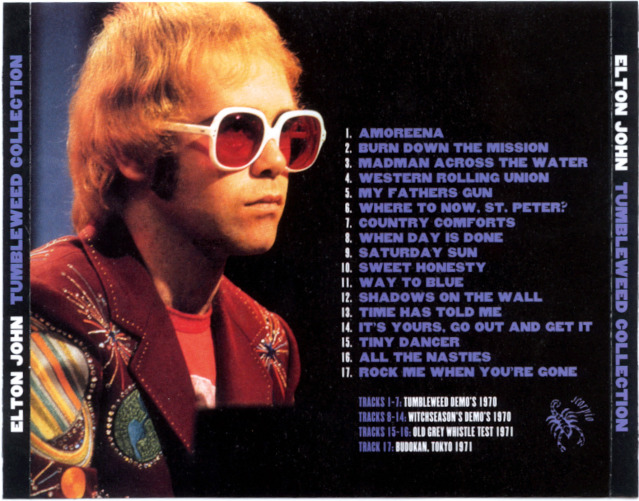

Lyrics by Bernie Taupin reproduced by permission of the publisher © 1976 Big Pig MusicĬover painting 'The Guardian Readers' by Patrick ProcktorĪ2 - London Symphony Orchestra: Recorded at EMI Studios, Abbey Road, London, engineer John KurlanderĪ3, B3, D2 - The Martyn Ford Orchestra: Recorded at EMI Studios, Abbey Road, London, engineer John KurlanderĪ4, B2, B3, C3, C4, C5 - Backing vocals recorded at Brother Studio, Santa Monica, California, engineered by Gus Dudgeon andī1, B4, D3 - Horn Section - The Brecker Bros: Randy & Michael Brecker with Barry Rogers and David Sanborn recorded at Sunset Sound Recorders, Los Angeles, engineer Mark Howlettī1 - Horn Section and Backing Vocals recorded at Sunset Sound Recorders, Los Angeles, engineer Mark Howlettī3 - Brass and Strings recorded at EMI Studios, Abbey Road, London, engineer John KurlanderĬ1 - Accordion & Strings recorded at Sunset Sound Recorders, Los Angeles, engineer Mark Howlettĭ1 - Backing vocals recorded at Sunset Sound Recorders, Los Angeles, engineer Mark Howlettĭ5 - Backing vocals and strings recorded at Sunset Sound Recorders, Los Angeles, engineer Mark HowlettĪ2 to A4, B3 to C2, C5, D1, D3 to D5 Big Pig Music Ltd.ī1, B2, C3, C4, D2 Big Pig Music Ltd.-Rocket Music Ltd.'ī1, B2, C3, C4, D2 Big Pig Music Ltd.-Rocket Music Ltd. This release differs from other Italian Releases as Album Title is in inverted commas on label ('BLUE MOVES').īasic tracks throughout recorded at Eastern Sound, Toronto, Canada, engineered by Gus Dudgeon and John Stewart.Įntire album remixed at Marquee Studios, London, engineered by Phil Dunne and Gus Dudgeon.


Add to cart Bob Dylan John Birch Society Blues 1972 U.S. It's also worth mentioning that this effort marked the end of John's initial collaboration with lyricist Bernie Taupin, who would resurface some three years later, albeit haphazardly on 21 at 33 (1979).Catalog number on the reverse sleeve and spine is 3C 164-98293/94 A copy of the double live album Broadcasts/Maui by Jimi Hendrix, issued on the Ruthless Rhymes label with one blue vinyl disc and one red vinyl disc. 2 It was the second single released from the album in the UK, and the first single released in the United States. James Cleveland, "Crazy Water," the haunting ballad "Idol," and the set's closing R&B vamp, "Bite Your Lip (Get Up and Dance!)." While Blue Moves is a far cry from essential entries in the Elton John catalogue, the bright moments prove that he could still offer up higher than average material. ' Im Still Standing ' is a song written by English musician Elton John and songwriter Bernie Taupin, from Johns 1983 album Too Low for Zero. Other standouts include the full-tilt gospel vibe of "Boogie Pilgrim," featuring backing vocals from both the Cornerstone Institutional Baptist and the Southern California choirs under the direction of Rev. The lively string arrangement by Howard stands as one of the finest contributions to his short-lived tenure in this band, which for all intents and purposes dismantled after the album was recorded. Instead, the album purposefully focuses on moodier and more introspective songs, such as the single "Sorry Seems to Be the Hardest Word" (the effort's sole hit), the achingly poignant "Tonight," and "Cage the Songbird." (The latter is particularly noteworthy, recalling the life of Edith Piaf in much the same way that "Candle in the Wind" had immortalized Marilyn Monroe.) "One Horse Town," which John briefly revived as a dramatic show opener during late-'80s live performances, is one of the album's most powerful and straight-ahead rockers. This album is from a private collection and is in near mint condition. As the title suggests, Blue Moves is a departure from the heavier Rock of the Westies (1975). Classic Elton John vinyl record Blue Moves album. John's band had expanded to include the talents of James Newton Howard (keyboards, orchestral arrangements), Kenny Passarelli (bass), Roger Pope (drums), as well as long-time collaborator Caleb Quaye (guitar) and Davey Johnstone (guitar) and Ray Cooper (percussion) from the "classic" early-to-mid-'70s lineup. While comparisons were inevitable to the landmark two-disc Goodbye Yellow Brick Road song cycle from 1973, most similarities in musical style and content end there. Although initially Blue Moves was summarily dismissed by both critics as well as longtime enthusiasts, the double LP has since gained considerable stature within John's voluminous catalog. By 1976, the immense creativity that had spurred Elton John to record 11 studio albums in under seven years was beginning to show signs of inevitable fatigue.


 0 kommentar(er)
0 kommentar(er)
